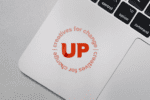No matter your level of experience outsourcing your design needs, working with a graphic designer in Sacramento (or anywhere) can be difficult for one reason and one reason alone: managing expectations. This is a common problem, one that Uptown Studios’ Creative Director Mackenzie McKinney is fluent in offering advice on how to solve. So I sat her down and asked her to tell me what she often suggests to our clients when asking for advice on how to best work with a creative team.
First, start with identifying your clear end-goal
According to Mackenzie, the best way to begin examining how you’ll manage a your graphic design team is to first examine your own goal:
“It’s important to work with a clear internal process that ultimately leads to a clear end goal. You need to make sure that everything you want created relates to the business’s mission, vision, and values. You wouldn’t create a logo for a downtown Sacramento business that better fit one from rural Auburn, would you? Without a process, you can find yourself accidentally creating an end product that doesn’t actually produce the results you set out to create. At Uptown Studios, having a clear process helps build structure in an otherwise “emotional” product. This helps set expectations, increases the sense of ease between your team and the designers, and decreases the risk of failure. That’s why the most important place to start is a conversation with YOU.”
Then, the kick-off meeting
Once your end goal is clear, Mackenzie says the kick-off meeting is crucial. While sometimes tedious or unnecessary, you need to ensure that your team and your design team are on the same page from the get-go.
“The kick-off meeting is a chance for the client to get to know their graphic design team, their business, and what both parties are hoping to accomplish. During kick-off meetings, I set our expectations and talk through our mutual understanding of the project. I have a “new client questionnaire” that we use for every single project, new client or not. Once the client and I have talked through our initial understanding of the scope of work, we sit and go through their answers to each question. Sometimes, clients are inexperienced in working with a design firm. They might have their own understanding or preconceived notions of what certain questions are really asking. I want to make sure that we take the time to remove any ambiguity from both sides. Plus, taking the time to do this makes a client feel well-cared for. Building trust between our team and the client is always a goal of the kick off meeting. Basically: the more information both parties have upfront, the smoother the process will go.”
Back into your internal process
Now that you’ve done a lot of work upfront, you need to make sure that same work is translated back to your team. Take your time to explain what will happen to your stakeholders. Not sure what this means? Here is what might happen if the Uptown Studios team was hired to create a new logo:
“With all our questions answered and the client’s business objectives in mind, we work within the creative team to develop the best concept for the organization. At Uptown Studios, we conduct market research, competitor research, and take a deep dive into the client’s past designed materials. With all this knowledge, we move forward to execute a visual design for initial client presentation. This part of the process has a process in itself and goes through many rounds of internal review. Designs are created by our graphic designers, reviewed by our copywriting team, and reviewed and approved by the creative director. This ensures that the client is getting the best product possible.”
Offering feedback
Offering helpful, constructive feedback takes practice. If you’re not well-versed in it, then this might be the hardest step. How can you do this well? I’ll let Mackenzie offer some guidance:
“Constructive feedback: With a design in concept, we open a new conversation with the client. This “new conversation” is best facilitated in person or over the phone. That way we can present our concept, explain our reasoning, and pitch why this is the best option for the client’s expressed goals while mitigating any potential areas for confusion. This part of the process is intended to actually be a conversation. If you’re not sure what to talk about beyond once the design has been presented to you, I recommend you ask the designer what they need to know from you. Offer your thoughts and feelings about the product, or offer your own thought process to help give them some insight. All feedback is good feedback! Just make sure that you don’t lose sight of those carefully set end-goals at this stage. How many rounds of edits do you have to make changes? Are their changes including work that is out of scope or new to the overall project conversation? Watch out for those and do your best to kindly remind the designer of the goals you set at the get-go.”
Final steps
Once a final design is settled, there are a few last things you should keep in mind. You’re almost done with the project, but don’t let that make you sight of your goals.
“After going back and forth to make the perfect design, you want to ensure long-term success with the project. For us at Uptown Studios, this means going back to our first meeting and making sure we fulfilled the scope of work. What kind of file types did we agree to? What about distribution or printing?”
Doesn’t sound too hard, does it? Managing your graphic design team can feel intimidating, but it will save you countless hours (and money) that you might otherwise waste if you hadn’t. Good luck!
Blog


